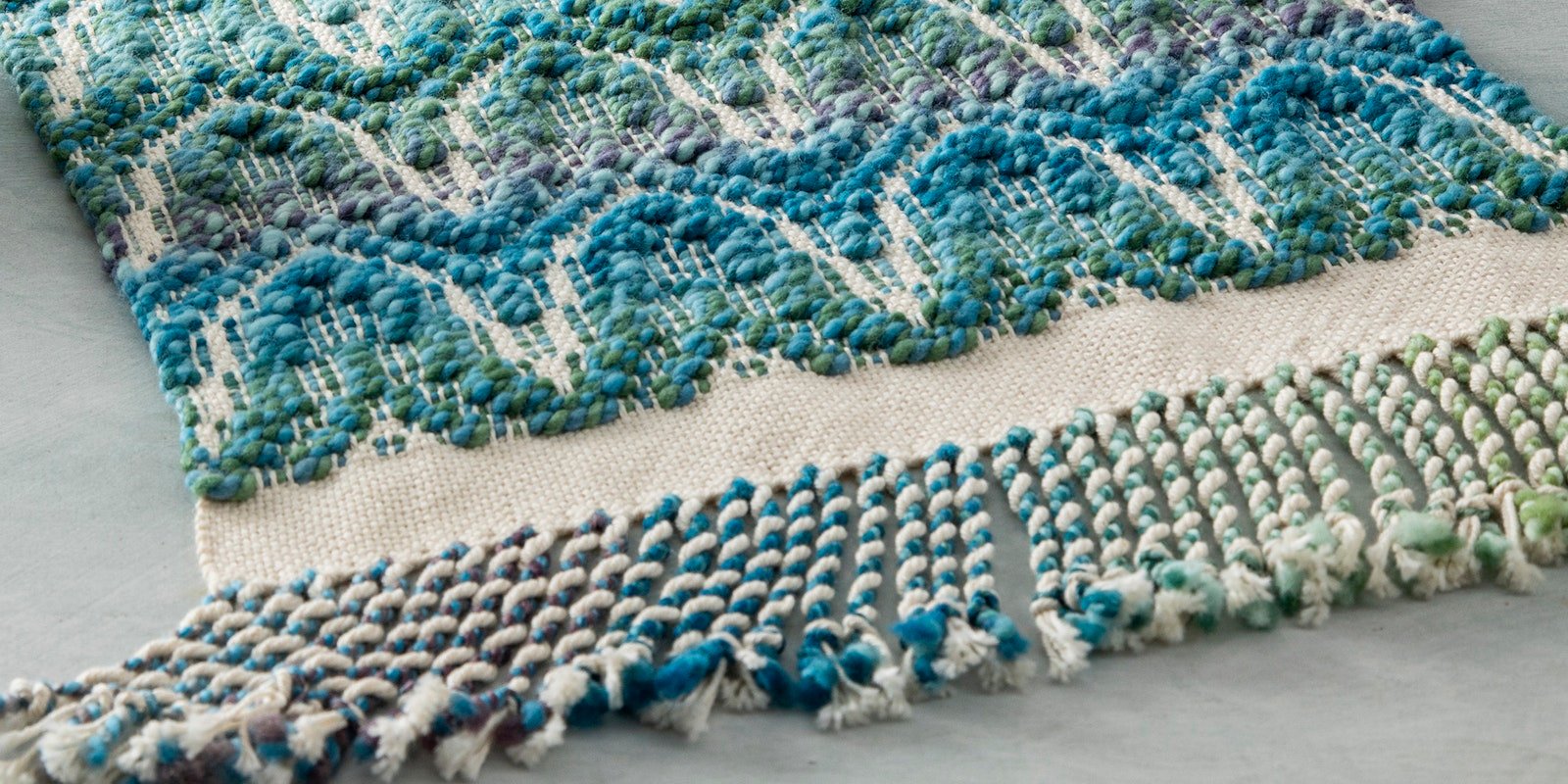Welcome to the Winter 2025 issue of Handwoven! You’ll find 10 irresistible projects in it that provide a variety of ways for you to experiment with ups and downs in your weaving, a pair of books about weaving passementerie (plus a project from one of them), and a first look at a replacement yarn for our beloved Zephyr. Here’s more about what you’ll find in the pages of this issue.
We’re all here, at this particular weaving magazine website, because of something Linda Ligon did fifty years ago—on what sounds almost like a whim, she started a publishing company.
Here she is, describing what happened: “Talk about naive. . . . An ex-high school English teacher with a nine-month-old baby, a few hundred dollars of savings, and the idea that, what the heck, I would publish a weaving magazine in my spare time. It was for sure a dining table operation at first. I had this big drawing board that I pinned everything to, and moved it off the table at mealtimes. I had invested in a primitive type-setting machine (it didn’t have a screen, so I couldn’t see if I was making typos), an old camera, and a used enlarger that sat on top of my wash-ing machine. What more could you possibly need to get started? Well, ignorance helped.” (I recommend reading the entire essay, which you’ll find on page 100 in the November/December 1985 issue of Handwoven.)
That first magazine, interweave, was followed a few years later by Spin-Off (which treated spinning as an interesting craft, a groundbreaking idea at the time), then Handwoven, and eventually magazines about all kinds of needle arts, jewelry, and even herbs.
Today, thousands of projects and tens of thousands of published pages about weave structures, weavers, yarns, experiments, and equipment later, Handwoven remains a source of knowledge and inspiration—and drafts for the dish towels that you’ll find in weavers’ kitchens everywhere. Weavers who have shared their expertise here over the years have included Deborah Chandler, Peter Collingwood, Madelyn van der Hoogt, Patrice George, Carol Strickler, Erica de Ruiter, Sharon Alderman . . . I could keep going and going.
You can read about how Linda’s dining-room-table operation grew over the years, encompassing magazines, books, videos, and more. Then make the Shaggy-Bag Story project she designed in 2008, but we love it so much we republished it in the new issue. (If you weave your version of the Shaggy-Bag Story, please show it off on Instagram or Facebook using #handwovenmagazine.)
Left: The exuberance of Linda Ligon’s 2-shaft Shaggy Bag Story, from our archives, caught our attention—so we republished it in this issue. Photo by Joe Coca
Right: Sheila O’Hara hoped that the beautiful color gradations in her Dicey Dish Towels would use up all her leftover bobbins—can you guess how that worked out for her?
Left: Differential shrinkage leads to ruching in Alison Stewart-Guinee’s Birds of a Feather Scarf.
Right: The honeycomb treadling variation in Malynda Allen’s Garden Path Towels suggests many ways to Make It Your Own.
Also in this Issue
Denise Kovnat gave the new yarn Zephira by Revolution Fibers a test drive, weaving it alongside Zephyr (RIP) in doubleweave and deflected doubleweave samples. We expect that we’ll all be hearing more about Zephira.
Shadow-weave luminary Rebecca Winter wrote about the 100-day project during which she freely shared her skills, drafts, and creative energy with the world.
We reviewed two books about weaving passementerie, and excerpted a project from one of them about weaving and dip-dying a charming Shetland fringe. After you weave it, you can use it to trim a pillow or lampshade—or the edge of a shelf in your studio.
See what Tom Knisely learned when he sampled close color-and-weave relations in Notes from the Fell.
Subscribe today to read our first look at Zephira, and to get access to all 10 projects, as well as three bonus web projects.
Have you changed a Handwoven project to make it your own? Please share your photos with us on Instagram or Facebook using #handwovenmagazine. As always, please send your weaving questions and comments to [email protected]. I look forward to hearing from you! —Lynn





